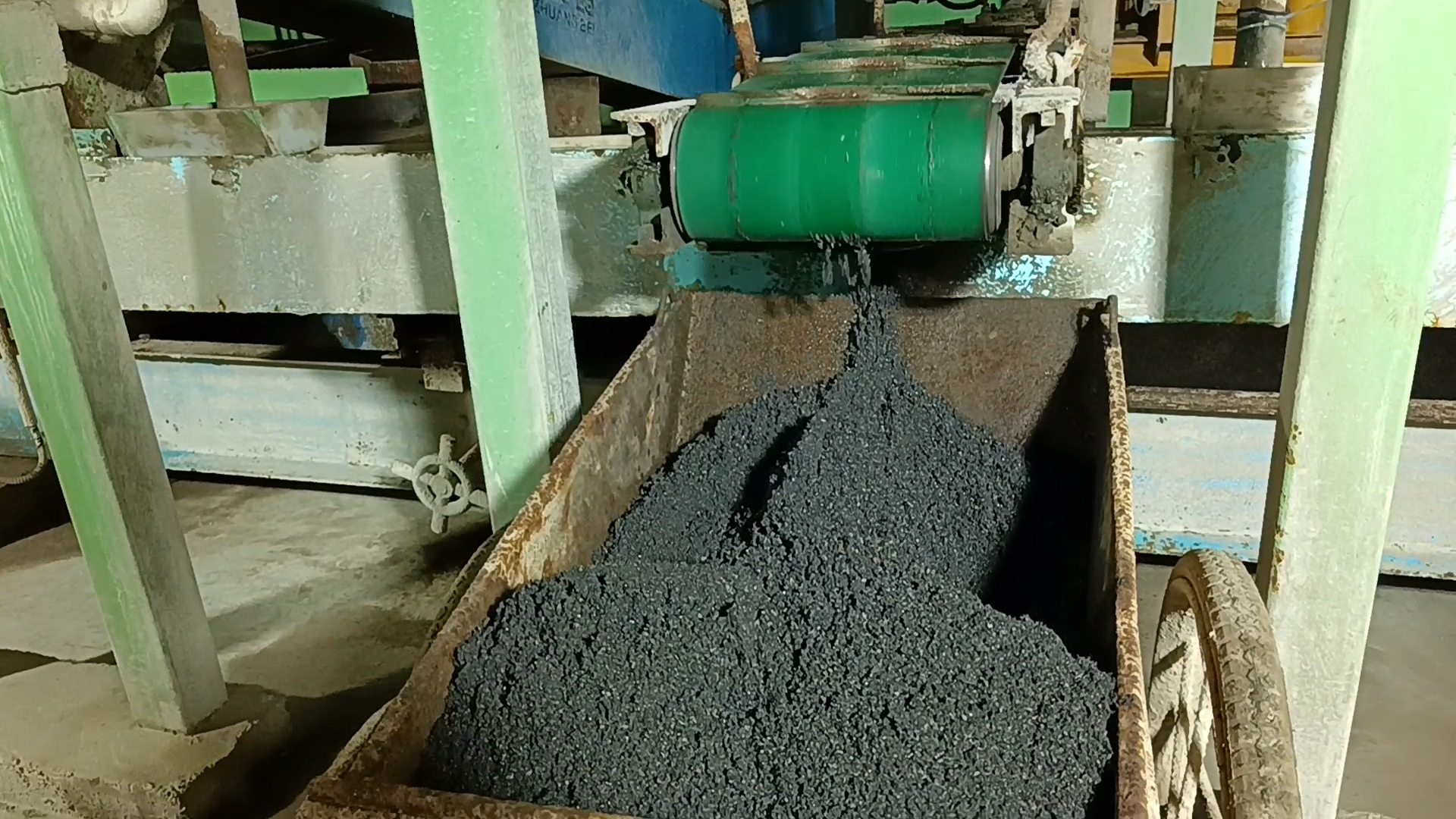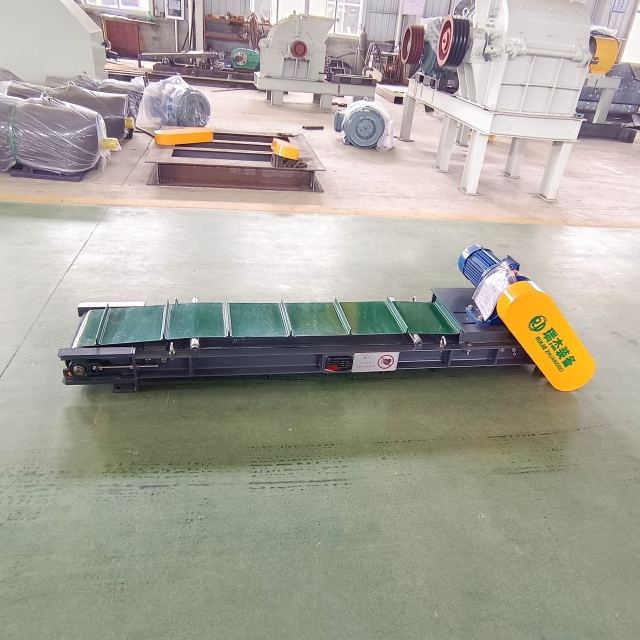Slag processing is a crucial step in various industries, such as mining, and recycling, where impurities need to be separated from the desired materials. To achieve efficient and effective separation, the use of permanent magnetic separators has become increasingly popular. These advanced separators offer numerous benefits that contribute to improved productivity and product quality. In this article, we will explore the advantages of using permanent magnetic separators in slag processing. Additionally, we will delve into the different types of permanent magnetic separators available in the market, providing insights into their unique features and functionalities.

Furthermore, we will discuss key factors that should be considered when selecting the most suitable permanent magnetic separator for a specific application. Lastly, we will share best practices for optimizing the use of these separators to maximize their performance and ensure optimal results in slag processing operations. By understanding the importance of minimizing impurities and utilizing permanent magnetic separators effectively, industries can enhance their overall efficiency and profitability.
Benefits of Using Permanent Magnetic Separators
Permanent magnetic separators are invaluable tools across various industries, offering a multitude of benefits that enhance efficiency and productivity. These innovative devices are designed to effectively separate the ferrous materials from the different substances and ensuring a high level of purity and quality.
One significant advantage of utilizing permanent magnetic separators is their ability to eliminate ferrous contaminants during the production process. These contaminants, such as iron particles and other magnetic debris, can significantly impact the quality of the final product. By incorporating permanent magnetic separators, manufacturers can prevent these contaminants from infiltrating the production line, resulting in a superior standard of finished goods.
Another notable benefit of employing permanent magnetic separators is the extended lifespan of equipment. Presence of ferrous materials within machinery can lead to wear and damage over time. This can result in costly repairs or replacements, negatively impacting a company's finances. By effectively removing these detrimental materials using permanent magnetic separators, businesses can prolong the longevity of their equipment, thereby reducing maintenance costs.
In addition to safeguarding equipment, permanent magnetic separators also contribute to a safer work environment. Industries such as mining and recycling often face safety risks due to the presence of ferrous contaminants. These contaminants can cause equipment malfunctions, leading to accidents or injuries. By implementing permanent magnetic separators, companies can eliminate such hazards, ensuring a safer workplace for their employees.
Furthermore, permanent magnetic separators offer a cost-effective solution for material separation. Compared to alternative methods like electromagnetic separators, permanent magnetic separators consume minimal power and have lower maintenance costs. Moreover, they eliminate the need for consumable materials, making them a sustainable and environmentally friendly choice.
By optimizing the paragraph, the focus remains on the purpose of magnetic separators, which is to separate valuable magnetic materials for recycling purposes while avoiding waste and protecting the environment.
Different Types of Permanent Magnetic Separators
Permanent magnetic separators are essential equipment used in various industries for the separation of magnetic materials. These separators utilize magnetic properties to separate and remove magnetic substances from non-magnetic materials. They are widely used in industries such as mining, recycling. In this article, we will discuss different types of permanent magnetic separators and their applications.
One of the most common types of permanent magnetic separators is the magnetic drum separator. This separator consists of a cylindrical drum that rotates on an axis. As materials pass through the drum, the magnetic field attracts and holds magnetic particles, while non-magnetic particles continue their trajectory. Magnetic drum separators are used in applications where the separation of large quantities of magnetic materials is required.
Another type of permanent magnetic separator is the magnetic pulley separator. This separator consists of a stationary magnetic pulley mounted on a conveyor belt. As the belt moves, the magnetic pulley attracts and holds magnetic materials, separating them from non-magnetic materials. Magnetic pulley separators are commonly used in industries such as recycling, where they help in the separation of ferrous materials from non-ferrous materials.
Permanent magnetic plate separators are another type of magnetic separator used for the separation of magnetic materials. These separators consist of a series of magnetic plates arranged in a parallel manner. As materials pass through the gaps between the plates, the magnetic field attracts and holds magnetic particles, separating them from non-magnetic particles. Permanent magnetic plate separators are commonly used in industries such as mining and coal processing.
In addition to the above-mentioned separators, there are also permanent magnetic roll separators and permanent magnetic overband separators. Permanent magnetic roll separators consist of a series of magnetic rolls arranged in a horizontal manner. These separators are used to separate weakly magnetic materials from non-magnetic materials. Permanent magnetic overband separators, on the other hand, are used for the continuous removal of magnetic materials from conveyed material streams.
Key Factors to Consider When Choosing Permanent Magnetic Separators
When it comes to choosing permanent magnetic separators, there are several key factors that need to be considered. These factors can greatly impact the efficiency and effectiveness of the separation process.
1. First and foremost, the strength of the magnetic field is a crucial factor to consider. The strength of the magnetic field determines the ability of the separator to attract and capture magnetic particles. It is important to choose a separator with a strong magnetic field to ensure that it can effectively separate the desired materials.
2. Another important factor to consider is the size and shape of the magnetic separator. The size and shape of the separator should be compatible with the size and shape of the materials being separated. It is important to choose a separator that can accommodate the volume of material that needs to be processed.
3. Additionally, the design and construction of the separator should be taken into account. The separator should be durable and able to withstand the demands of the separation process. It should also be easy to clean and maintain to ensure optimal performance.
4. The type of magnetic material used in the separator is also a key factor to consider. Different magnetic materials have different properties and strengths. It is important to choose a separator with the appropriate magnetic material for the specific application.
5. Furthermore, the operating conditions should be considered when choosing a permanent magnetic separator. The temperature, humidity, and other environmental factors can affect the performance of the separator. It is important to choose a separator that can operate effectively under the specific conditions of the application.

Best Practices for Optimizing the Use of Permanent Magnetic Separators
Permanent magnetic separators are essential tools in various industries and applications. These devices play a crucial role in efficiently separating magnetic materials from non-magnetic substances. To ensure the optimal use of permanent magnetic separators, it is important to follow best practices that enhance their performance and longevity.
One of the key best practices is to regularly inspect and maintain the separators. This includes checking for any signs of wear and tear, such as cracks or damage to the magnetic elements. It is also important to clean the separators regularly to remove any accumulated debris or contaminants that may hinder their effectiveness. By conducting routine maintenance, businesses can ensure that their permanent magnetic separators continue to operate at peak efficiency.
Another important aspect of optimizing the use of permanent magnetic separators is proper installation. These separators should be installed in a location where they can effectively capture and remove magnetic materials from the desired process stream. It is crucial to position the separators in a way that maximizes their exposure to the material flow, ensuring efficient separation.
Additionally, it is essential to consider the specific requirements of the application when selecting a permanent magnetic separator. Factors such as the size and shape of the magnetic elements, the strength of the magnetic field, and the flow rate of the material being processed all play a role in determining the most suitable separator for a particular application. By selecting the right separator for the job, businesses can optimize their magnetic separation processes and achieve the desired results.
Furthermore, it is important to monitor the performance of permanent magnetic separators regularly. This can be done by measuring the magnetic field strength and conducting periodic tests to ensure that the separators are functioning optimally. By monitoring performance, businesses can identify any potential issues or deviations from the desired operating conditions and take corrective actions promptly.
Conclusion
The article highlights the significant benefits of using permanent magnetic separators in various industries. These devices improve product quality, extend equipment lifespan, and create a safer working environment. They are cost-effective and efficient, making them essential for companies aiming for optimal production processes and high standards.
These separators efficiently separate magnetic substances from non-magnetic substances, contributing to overall productivity and quality. When choosing permanent magnetic separators, factors like magnetic field strength, size and shape of the separator, design and construction, type of magnetic material used, and operating conditions should be considered. Adhering to best practices such as regular inspection and maintenance, proper installation, thoughtful selection of the right separator, and ongoing performance monitoring can optimize the use of permanent magnetic separators, leading to improved productivity and product quality.












